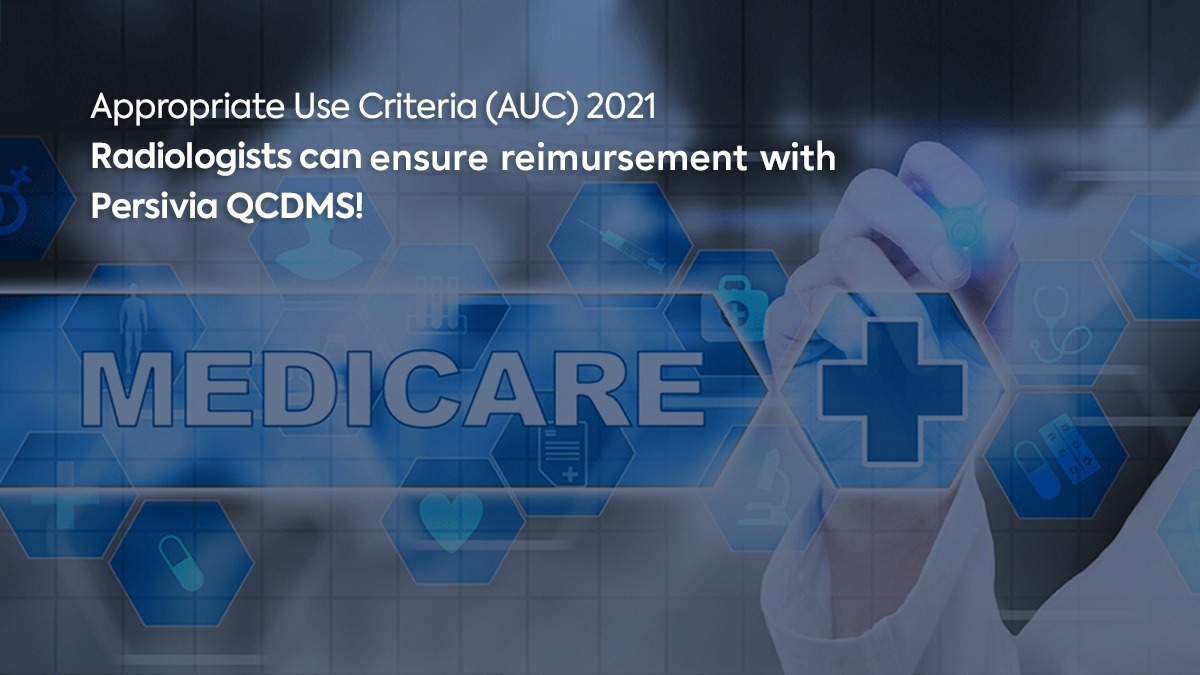The Protecting Access to Medicare Act (PAMA) established in 2014 was designed to increase the rate of advanced diagnostic imaging services provided to Medicare beneficiaries. It currently gives beneficiary patients access to:
- Computed Tomography (CT)
- Positron Emission Tomography (PET)
- Nuclear Medicine
- Magnetic Resonance Imaging (MRI)
This program led to the development of a workflow between physicians that ordered the diagnostic imaging tests as well as those that furnished them. The evolution of this workflow has led to the appropriate use of documentation that takes into account the needs of the patient beneficiary. As a result, CMS uses the data collected from the program in order to identify and streamline prior authorization use cases
What is Appropriate Use Criteria Program
AUC or Appropriate Use Criteria is evidence-based criteria endorsed by PLE’s (Provider-Led Entities) so ordering physicians can make the most patient-appropriate treatment decision for a specific clinical ailment. Beginning in 2020, The AUC consult prior to a diagnostic image being ordered by a provider must be documented via a CMS-qualified clinical decision support mechanism (QCDSM).
How Appropriate Use Criteria Program AUC impacts Radiologists
As we noted earlier, during the CY 2020 period, a new rule came about that ordering Medicare part B advanced diagnostic imaging services required consultation via a QCDSM. This meant that in order for furnishing professionals like radiologists to complete diagnostic imaging, a provider has to provide the imaging facility with an AUC certificate.
Completing a QCDSM has no benefits for ordering physicians. Radiologists, however, are financially rewarded by CMS if they are able to get the provider to complete the QCDSM workflow in order to comply with the AUC program.
While there are some circumstances and situations where an AUC is not required (ie. pregnancy or emergency scenarios), completing QCDSMs are the primary way that radiologists can receive reimbursements for diagnostic imaging. It is, however, up to the ordering physician to make the decision and grant the certification.
As the program is set to be fully implemented on January 1st, 2022, radiologists must have a practice in place to make sure physicians can easily supply the consultation information or risk missing out on CMS reimbursements.
Persivia CareTrak™ for Radiologists
A major part of receiving benefits through CMS’ AUC program in 2021 is convincing physicians to complete an additional workflow that is voluntary and does not affect their benefit status.
Fortunately, Persivia’s AUC module within the CareTrak™ application can make this an extremely easy process. All the ordering provider needs to do is enter the patient’s clinical indication and Persivia’s standalone cloud-hosted Clinical Decision Support (CDS) will present a simple questionnaire that, once completed, will provide the imaging facility with an AUC certificate that contains the NPI number as well as who the ordering physician is. This proof of patient imaging order can then be used at the end of the year when CMS delivers reimbursements based on the new AUC criteria.
While getting physicians to complete a QCDSM has historically been just another obstacle for radiologists, CareTrak™ can streamline this process. By providing physicians with a simple and easy way to complete QCDSMs, radiologists can maximize savings through CMS’ AUC program.
Are you ready to save with CareTrak™? Contact us for a demo today.
Table of Contents
